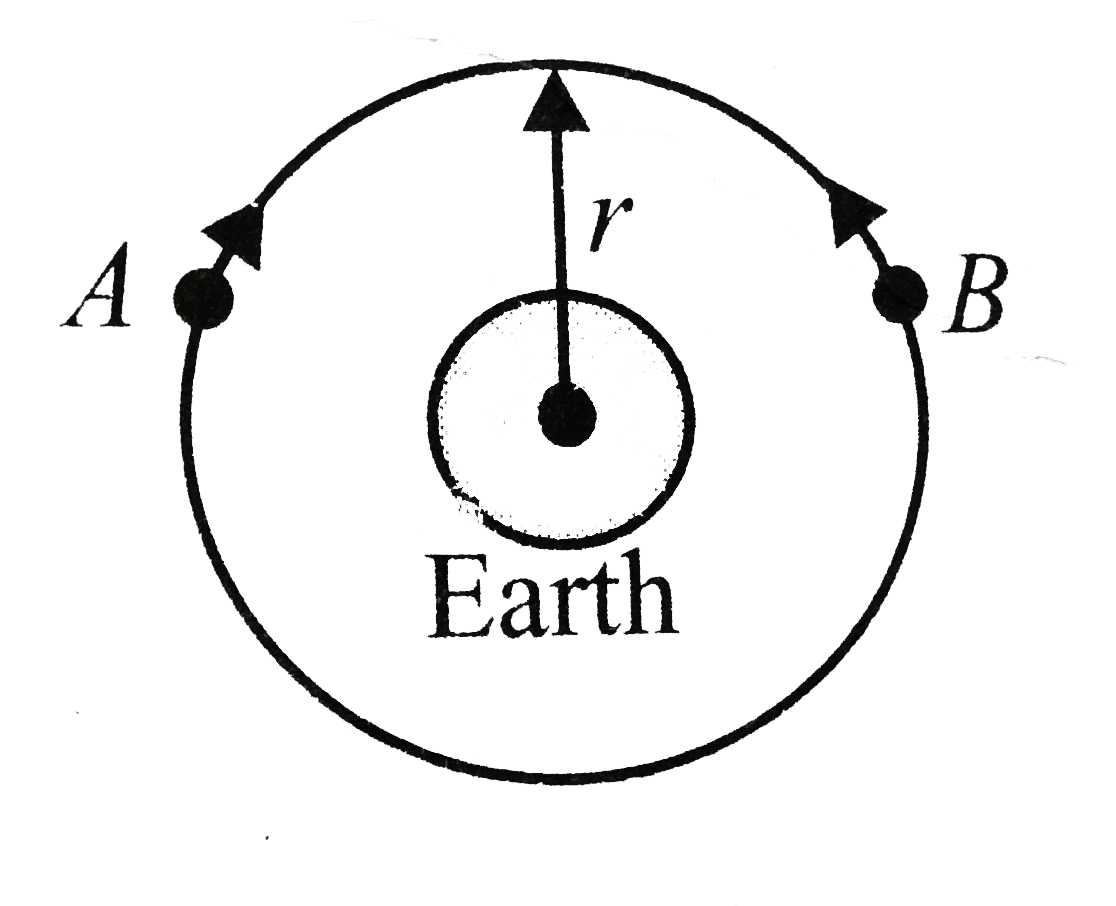Should the speed of two artificial satellites of the earth having the different masses but the same orbital radius be the same?
To determine if two artificial satellites of different masses but the same orbital radius have the same speed, we can analyze the situation using the principles of gravitation and orbital motion.
1. Understanding Orbital Motion:
- When a satellite orbits the Earth, it is in a state of free fall towards the Earth, but because of its tangential velocity, it keeps missing the Earth. This balance of gravitational force and centripetal force allows the satellite to maintain its orbit.
2. Gravitational Force:
- The gravitational force acting on a satellite of mass m at a distance r from the center of the Earth (mass M) is given by Newton's law of gravitation:
Fg=GMmr2
where G is the gravitational constant.
3. Centripetal Force:
- For a satellite to remain in a circular orbit, the gravitational force must provide the necessary centripetal force. The centripetal force required for an object of mass m moving with speed v in a circular path of radius r is given by:
Fc=mv2r
4. Setting Forces Equal:
- For the satellite to maintain its orbit, the gravitational force must equal the centripetal force:
GMmr2=mv2r
5. Cancelling Mass:
- Notice that the mass m of the satellite appears on both sides of the equation. We can cancel m (assuming m≠0):
GMr2=v2r
6. Solving for Speed:
- Rearranging the equation to solve for v:
v2=GMr
- Taking the square root gives us the orbital speed:
v=√GMr
7. Conclusion:
- The expression for v shows that the orbital speed v depends only on the mass of the Earth M and the radius r of the orbit. It does not depend on the mass of the satellite m.
Final Answer:
Yes, the speed of two artificial satellites of the Earth having different masses but the same orbital radius will be the same.
- When a satellite orbits the Earth, it is in a state of free fall towards the Earth, but because of its tangential velocity, it keeps missing the Earth. This balance of gravitational force and centripetal force allows the satellite to maintain its orbit.
- The gravitational force acting on a satellite of mass m at a distance r from the center of the Earth (mass M) is given by Newton's law of gravitation:
Fg=GMmr2
where G is the gravitational constant.
- For a satellite to remain in a circular orbit, the gravitational force must provide the necessary centripetal force. The centripetal force required for an object of mass m moving with speed v in a circular path of radius r is given by:
Fc=mv2r
- For the satellite to maintain its orbit, the gravitational force must equal the centripetal force:
GMmr2=mv2r
- Notice that the mass m of the satellite appears on both sides of the equation. We can cancel m (assuming m≠0):
GMr2=v2r
- Rearranging the equation to solve for v:
v2=GMr
- Taking the square root gives us the orbital speed:
v=√GMr
- The expression for v shows that the orbital speed v depends only on the mass of the Earth M and the radius r of the orbit. It does not depend on the mass of the satellite m.
Yes, the speed of two artificial satellites of the Earth having different masses but the same orbital radius will be the same.
Topper's Solved these Questions
- GRAVITATIONBook:CENGAGE PHYSICS ENGLISHChapter:GRAVITATIONExercise:Subjective
Explore 15 Videos
- GRAVITATIONBook:CENGAGE PHYSICS ENGLISHChapter:GRAVITATIONExercise:Single Correct
Explore 122 Videos
- GRAVITATIONBook:CENGAGE PHYSICS ENGLISHChapter:GRAVITATIONExercise:Exercise 6.3
Explore 16 Videos
- FLUID MECHANICSBook:CENGAGE PHYSICS ENGLISHChapter:FLUID MECHANICSExercise:INTEGER_TYPE
Explore 1 Video
- KINEMATICS-1Book:CENGAGE PHYSICS ENGLISHChapter:KINEMATICS-1Exercise:Integer
Explore 9 Videos
Similar Questions
Knowledge Check
A satellite is orbiting the earth in a circular orbit of radius r. Its
AKnetic enegy varies as rBangular momentum varies as 1√rClinear momentum varies as 1rDfrequency of revolution varies as 1r3/2
Two artificial satellites of the same mass are moving around the earth in circular orbits of different radii. In comparision to the satellite with lesser orbital radius, the other satellite with higher orbital radius will have:
View SolutionTwo artificial satellites of the same mass are moving around the earth in circular orbits of different radii. In comparision to the satellite with lesser orbital radius, the other satellite with higher orbital radius will have:
View SolutionTwo satellites A and B move round the earth in the same orbit. The mass of B is twice the mass of A.
View SolutionStatement-1: The plane of the orbit of an artificial satellite must contain the centre of the Earth.
Statement-2: For an artificial satellite, the necessary centripetal force is provided by gravity.
View SolutionA satellite of earth of mass 'm' is taken from orbital radius 2R to 3R, then minimum work done is :-
View SolutionAn artificial satellite of the earth is launched in circular orbit in the equatorial plane of the earth and the satellite is moving from west to east. With respect to a person on the equator, the satellite is completing one round trip in 24h. Mass of the earth is M=6×1024kg.For this situation the orbital radius of the satellite is
View SolutionConsider two satellites A and B of equal mass m, moving in the same circular orbit about the earth, but in the opposite sense as shown in Fig. The orbital radius is r. The satellites undergo a collision which is perfectly inelastic. For this situation, mark out the correct statement(s). [Take mass of earth as M]

View Solution

